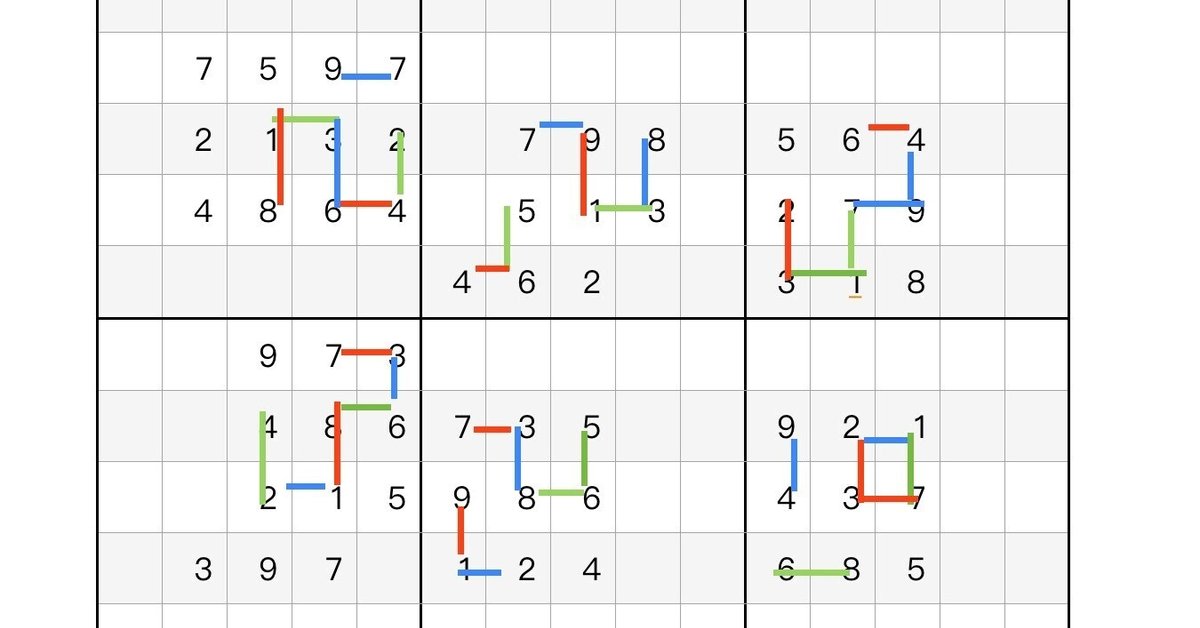
Liang's Sudoku Hole Theorem
Liang's Sudoku and odd hole theorem
Definition 1: sudoku nine nine palace any a line of three lines of three two digits x1 and d1, exist in the same row of two other nine palace a nine palace of three lines, or any nine palace in the same line of two Numbers x1, d1, can be in the same row of two other nine palace in three lines of three digits find two, we say the same line of three x1, d2 two numbers is twin T brother, the rest of a number g1 called a soliton. Nature 1: three x1, d1 in the nine palaces, must be occupied by the three palaces, there is no two palaces, no palace, the same row of no x1, d1 in the twin T.
Property 2: the same row of three nine houses not only meet property 1, x1, d1, there must be x2, d2 of twin T, and x3, d3 of twin T, and the corresponding g2, g3. x1d1,g1 ; x2d2,g2; x3d3,g3。 We can also define the second row of the corresponding twin T brothers, as well as the lone son.
x‘1d’1,g‘1 ;
x’2d‘2,g'2;
x’3d‘3,g’3。
Similarly, there can be a third row of nine palaces corresponding to:
x”1d”1,g”1 ;
x”2d”2,g”2;
x”3d”3,g”3。
Therefore, there are only three solons in the same nine palace. Such as g1, g2, and g3. Similarly, any one of the three columns of three two digits z1 and m1, exist in the same column two other nine palace a nine palace of three columns, or any nine palace in the same column of two digits z1, m1, can be in the same two nine palace a nine palace three columns find two three digits, we say the same column three digits z1, m2 two numbers are twin T sister, the rest of a number G1 is called an orphan.
z1m1,z2m2,z3m3,
G1 , G2, G3;
The second column nine palace
z‘1m’1,z‘2m’2,z‘3m’3,
G‘1 , G’2, G‘3;
The third column nine palace
z”1m”2,z”2m”2,z”3m”3,
G”1, G”2, G”3;
Therefore, there are only three orphan women in the same nine palaces. For example, G1, G2, and G3.
Definition 2: in the same nine palace, if G and G are the same position, that is, the same number, it is called a single point, or cave D. The distribution of the nine houses is as follows:
D11,D12,D13;
D21,D22,D23;
D31,D32,D33;
Definition 3: If all nine or nine palaces have nine individual dots, we call them nine laps, or nine holes. According to definition 2, and definition 3, we have Liang's number theorem 1: any Suddoku in a nine palace will not be more than two. to be verified.
Liang's number odd hole theorem 2: the number of all single points in any sudoku does not exceed its maximum value of 12. to be verified.
Liang's number odd hole theorem 3: the number of all single points in any sudoku is not less than its minimum value of 6. to be verified.
この記事が気に入ったらサポートをしてみませんか?
